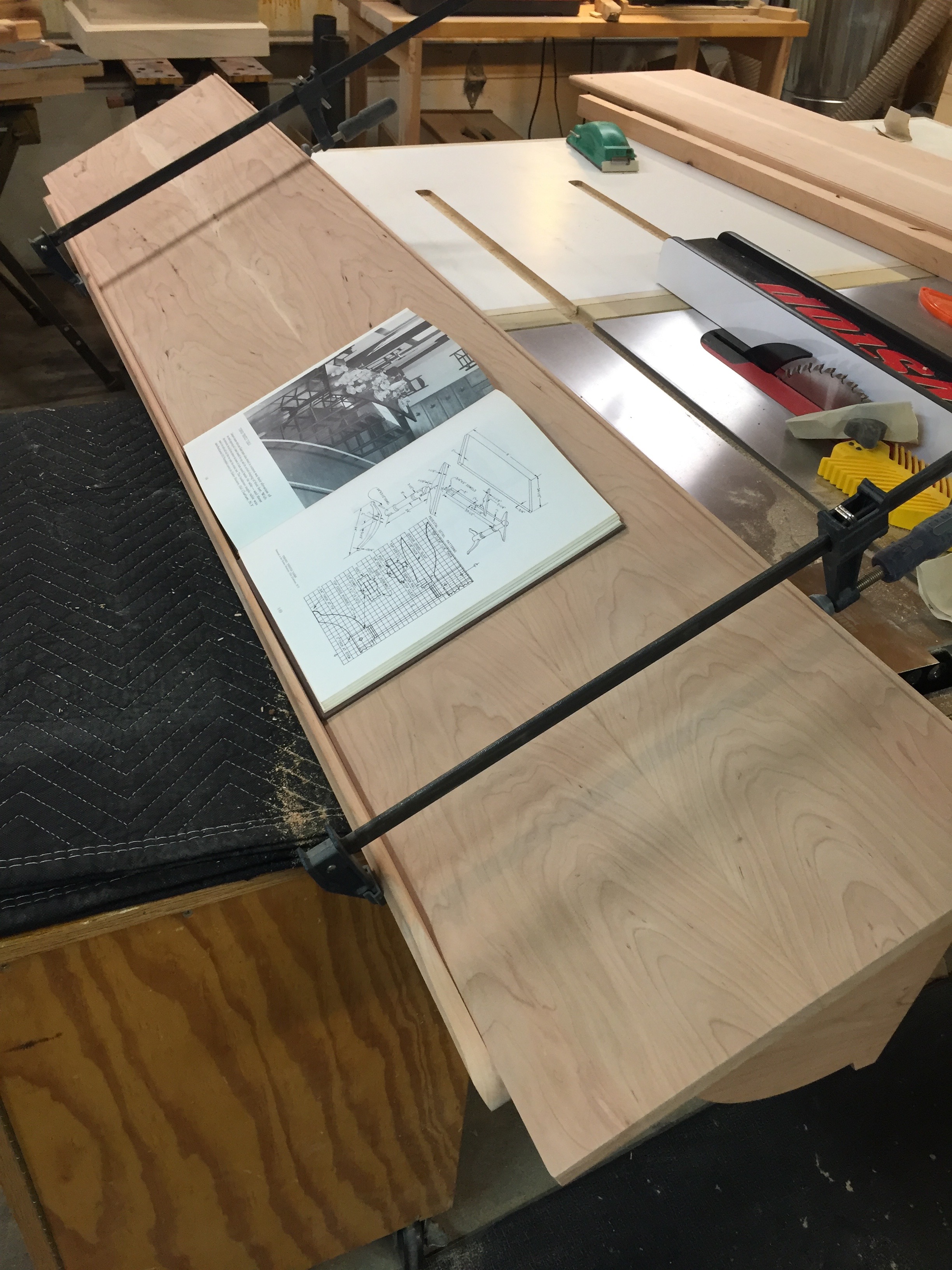I'm not an architect, but as I've grown as a furniture maker, the connections between furniture and architecture is strong and undeniable. Gustav Stickley, a furniture maker, designed homes, and published other's plans for craftsman homes, in his The Craftsman magazine. Frank Lloyd Wright not only designed homes, but often the furniture that went in them (the control freak that he was). So its not surprising to find inspiration in period buildings.
Recently, I went on a walking tour / architecture tour of some turn-of-the-last-century homes and buildings in my neighborhood. As a period furniture maker, a fan of craftsman / arts & crafts furniture, and the history of my city & neighborhood, this was a slam dunk for me. The tour was a mixed bag of highs and lows. There were some places that had been "modernized" by clueless people who had more money than taste, not "getting it", and ruining once classic interiors with horrid sterile choices (me, "they painted the oak wainscoting and built-in hutch GREY!?!?!"). Those places ranged from sad to unbearable (me "what did they do with the the original cabinets, the one's they replaced with those plastic things?"). But thankfully there were several places that, oh boy, they GOT IT. Really got it. Either well preserved, or in one case, lovingly restored - a gut rehab (for damage and structural issues) that looked like it had been that way for 100 years.
The star of the show (for me anyway, most people were oohing and awwwwing over a 1920s garage that had been converted into what must have been an aging rock star's modern man cave. Once color - concrete. sigh) was "the Rose Building", at 2934 W Logan Blvd, Chicago. It was so nicknamed by it's heavy Art Nouveau and Craftsman styled woodwork, art glass, and masonry using repeating rose motifs. (I wasn't allowed to take interior photos, but here are a few expired real estate listings that show interior shots, here and here.). Not only is the interior immaculate, with fantastic built-ins, trim, and woodwork throughout, that a look at this detail. A few decades ago, when this neighborhood was rougher, the original sidelights of the dramatic front door were vandalized, and replaced with simple plate glass...
... but over the last few years, they did research on the original glass, found old photographs, and rebuilt it to look like this...
Simply fantastic. The event was great, and I learned a lot about what to do and what not to do. My own maxim was reinforced - don't fight your home's style, embrace it, or get a different house. Anytime someone tries to think they're clever and quirky trying to make a Victorian home in Swedish modern, or an art deco house into a Georgian, you're going to fail, and it's going to look terrible.
So, keep our eyes open out there, there's a lot to learn, and lot to inspire your woodworking.



























































